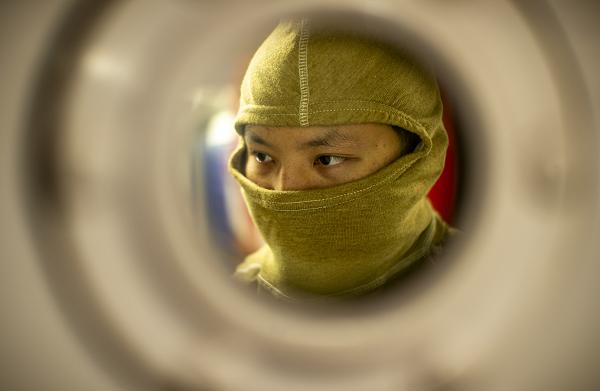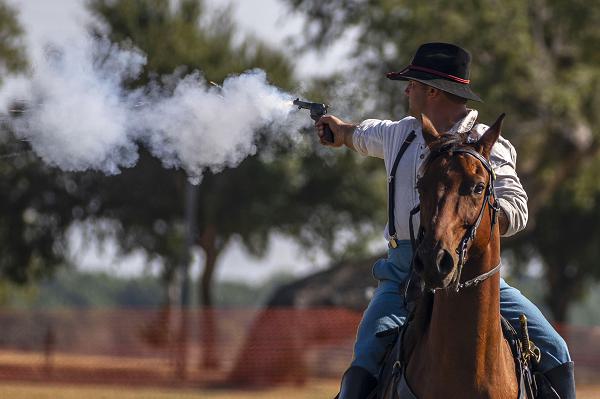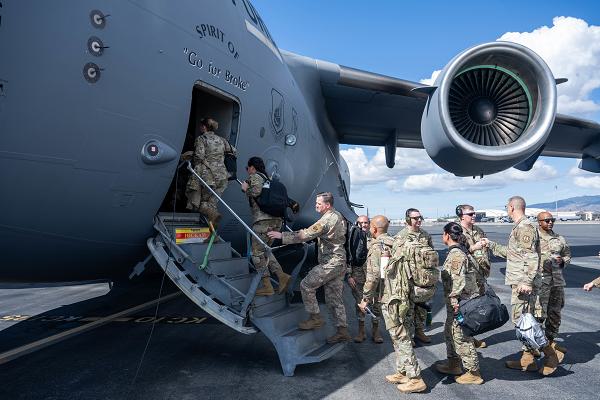- Details
- Hits: 966

Veteran’s Day brings mixed emotions for many former servicepeople.
On the one hand, it is a day dedicated in their honor, a nation’s way of saying thank you. On the other, it jogs memories that are best left forgotten. There are currently 15.8 million veterans today, many of them members of the greatest generation that are fading into history (In 2024, there are an estimated 66,000 of these veterans alive).
For those who missed the chance to serve, this day is your opportunity to express gratitude for the sacrifices these vets made for us. If you encounter a veteran this week, ask them how they are doing and say thanks.
- Details
- Hits: 1563

San Francisco, California. (November 1, 2024): Italian Americans overcame prejudice, stereotypes, and even questions of loyalty to serve in the Armed forces. In this photo by Navy Petty Officer 1st Class Jesse Monford, Marines assigned to the 1st Marine Division Band and sailors assigned to the Navy Band Southwest participate in the San Francisco Italian Heritage Parade during San Francisco Fleet Week.
According to the Department of Defense, Italian Americans fought in every major U.S. conflict since the beginning of the Republic, offering suffering casualties that far exceeded their share of the U.S. population.
In the American Civil War, between 5,000 and 10,000 Italian Americans fought in the war, including suffering alongside General George Washinton at Valley Forge. In World War I, Italian troops made up about 12% of the total American forces yet accounted for more than 10% of war casualties. During the conflict Michael Valente, an Italian-born American infantryman, was awarded the Medal of Honor.
Read more: CELEBRATING ITALIAN CONTRIBUTIONS TO U.S. DEFENSE
- Details
- Hits: 1253

Pacific Ocean. (November 2, 2024): In 1946, shortly after the end of World War II, Congress established the Atomic Energy Commission (AEC) to succeed the wartime Manhattan Project. One of the new agency’s missions was to harness the incredible power of the atom to drive America’s warships and submarines. In this photo by Seaman Apprentice Roselia Garcia, Machinist's Mate (Nuclear) 2nd Class Justin Lin, from Fort Lauderdale, Florida, closes a watertight door during general quarters drills aboard Nimitz-class aircraft carrier USS George Washington.
Before the discovery of nuclear power, America’s naval fleet was fueled by petroleum products that were expensive, difficult to deliver at sea, and limited the range a ship could operate before needing refueling. Nuclear power offered the prospect of an unending supply of clean fuel on board that allows a vessel to theoretically remain at sea forever.
- Details
- Hits: 1031

Fort Riley, Kansas. (October 29, 2024): The Army’s famed 1st Infantry Division Commanding General’s Mounted Color Guard (CGMCG) overwhelmed the competition at the recent National Cavalry Competition held in El Reno, Oklahoma. In the above photo, Staff Sergeant Ethan Cizauskas participates in the mounted pistol event where competitors had to ride horseback over and through obstacles while shooting specified targets along the course.
Members of the CGMCG competed alongside London’s Household Cavalry Mounted Regiment, Fort Irwin’s 11th Armored Cavalry Regiment, and various civilian groups. The event provides an opportunity for re-enactors, active and reserve military mounted color guards, and mounted police officers to show off their riding skills.
The competition included mounted saber, mounted pistol, military horsemanship, and military field jumping demonstrations. Re-enactors, in full period dress, demonstrated the skills of the American horse soldier before the advent of the motorized cavalry.
- Details
- Hits: 979

Air Force-Mission Command Training-Agile Deployment-ACE-spoke and wheel-ACE deployment-Support Our Troops
Joint Base Pearl Harbor-Hickam, Hawaii. (October 31, 2024): In this photo by Airman 1st Class Aden Brown, Air Force senior enlisted leaders board a C-17 Globemaster III for Mission Command Training on the Air Force’s Agile deployment concepts. The senior noncoms attended a six day exercise, hosted by Chief Master Sergeant of the Air Force David Flosi, that tested their ability to operate in isolated locations in the absence of orders or resources from higher up.
Agile Combat Employment (ACE) is an Air Force operational concept that uses a "hub-and-spoke" approach to disperse aircraft and airmen from large bases to smaller, more austere locations. The hub is a central location, such our large bases in Guam, while the spokes are the smaller, more dispersed locations, such as civilian airports or airstrips.
- Details
- Hits: 1132

Bethesda, Maryland. (November 1, 2024): It is a diagnosis all women dread and survival sometimes depends on just plain intuition. In the photo above, Lieutenant Colonel Jennifer Sayers poses with her husband Major Shannon Beers while on a walk. In April 2023, Sayers, an Airman with nearly eighteen years of service, was diagnosed with triple-negative breast cancer. Thus began her valiant struggle with this rare and extremely aggressive disease aided by her loving husband and military “family.”
According to the Army, Sayers was just 37 years old when she received her diagnosis, below the age range for regular mammograms, and had no family history of breast cancer. She discovered a lump in her breast and, going with her intuition, sought out medical care that confirmed her worst fears.


